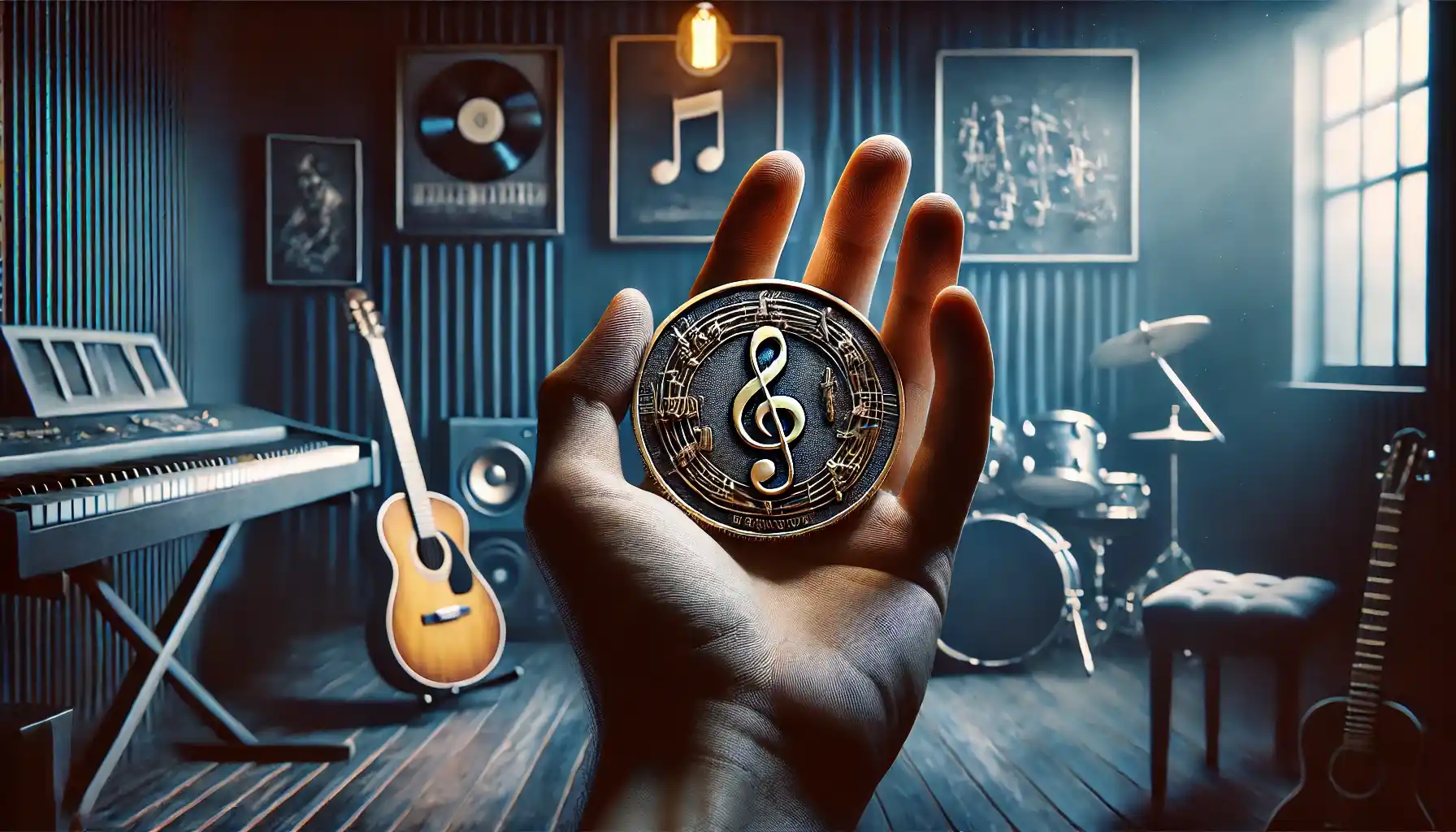The Bicentennial Half Dollar That Everyone Has — But Few Truly Know
The 1976 Kennedy half dollar is one of the most recognizable U.S. coins. It was part of the Bicentennial Coinage Program, issued to honor the 200th anniversary of American independence. Nearly every person in America has seen or handled one, yet few people understand its real worth. The 1976 half dollar value depends on metal type, condition, and mint mark — some are worth only fifty cents, while others can reach several dozen dollars depending on rarity and preservation.
A Quick Overview — What the Bicentennial Half Dollar Is
The Bicentennial half dollar was struck in 1975 and 1976 but all carry the dual date 1776–1976 and there are no coins marked 1975. The obverse shows President John F. Kennedy portrait by Gilroy Roberts, while the reverse shows Independence Hall designed by Seth G. Huntington. It was the first U.S. coin that displayed two years on its surface — symbol of the past and the nation’s two centuries of independence.
The design of the coin was simple, patriotic, and familiar, combining Kennedy’s portrait with an image of Independence Hall — the place where the Declaration of Independence was signed.
Feature | Specification |
Denomination | Half Dollar |
Composition | 75% copper, 25% nickel (clad) or 40% silver |
Weight | 11.34 g (clad) / 11.5 g (silver) |
Diameter | 30.6 mm |
Edge | Reeded |
Designers | Gilroy Roberts / Seth G. Huntington |
How to say if you have a clad or a silver issue? Just look at the coin’s edge. A reddish-brown stripe means copper-nickel clad; a fully silver rim usually indicates the 40% silver version.

The Bicentennial Coin Program
The Bicentennial Coinage Program (1975–1976) included three denominations: the Washington quarter, the Kennedy half dollar, and the Eisenhower dollar. Each received a unique reverse design, connected to American heritage. These coins were struck for circulation and as proof and silver collector editions.
Silver Bicentennial coins were sold in special three-coin sets known as Bicentennial Silver Sets, containing 40% silver versions of all three denominations. The goal was to give every American a chance to have their own part of the national event.
This was the first and only time that regular U.S. coins for mass use omitted the specific minting year — instead, they all have dual date 1776–1976 to mark the historic event.
Varieties and Versions — What Makes Them Different
Three main types of the Bicentennial half dollar are:
Clad Circulation Coins (P and D) – standard copper-nickel issues made for everyday use.
Proof Coins (S) – mirrorlike surface struck from polished dies for collectors.
Silver Proof and Silver Uncirculated (S) – made from 40% silver for limited collector sets.
Proof coins are easy to identify by their deep shine and sharp contrast between coin details (frozen) and mirror-like coin’s surface. They were never meant for circulation. Silver versions, by contrast, are heavier and have a brighter tone.
Collector tip: Handle proof coins with gloves or soft tweezers. Even a fingerprint can lower the grade and destroy the reflective finish.
Mintage Numbers — How Common Are They Really?
Mint | Mint Mark | Type | Mintage |
Philadelphia | None | Circulation | 234,308,000 |
Denver | D | Circulation | 287,565,248 |
San Francisco | S | Proof (Clad + Silver) | ~11,000,000 (combined) |
In total, over 530 million half dollars were struck. These impressive minting numbers make the coin far from rare. Most examples in circulation have minimal collector value, but well preserved or silver pieces can bring modest premiums.
As we mentioned earlier, due to its high production numbers, the coin is not rare in itself; moreover, every American has held it in their hands at least once, making it a symbol of the 1976 celebrations.
The Real Value — How Much Is a 1976 Half Dollar Worth Today
Most Bicentennial half dollars remain worth face value. However, collector versions and high-grade examples are valued higher.
Type | Condition | Approximate Value |
1976 (P) Clad Circulated | XF–AU | $0.50–$1 |
1976-D (Clad) | MS65 | $3–$5 |
1976-S Proof (Clad) | PR69 | $8–$12 |
1976-S 40% Silver Proof | PR69 | $12–$25 |
1976-S 40% Silver Uncirculated | MS68 | $15–$30+ |
Coins in MS67 and above are harder to find because most circulated heavily and have severe signs of wear. But as you see, silver proofs (especially in original government sets with packaging) often bring the best prices.
Collector tip: Use a digital scale to check a coin: silver versions weigh slightly more than clad ones. And remember that clean, untarnished coins with full luster always attract more interest from buyers.
Valuable Errors and Varieties to Watch For
You know that common coins can be worth only their face value, but error coins from 1976 are uncommon and can be worth hundreds or even thousands depending on rarity and visibility.
Doubled die obverse (DDO) – doubling on “IN GOD WE TRUST” or “LIBERTY.” Prices range from $100 to $600+.
Off-center strike – part of the design is misaligned; the more the shift, the higher the value. These error examples can cost between $200–$2,500.
Clipped planchet – a missing portion of metal along the rim, caused by miscut blanks. The price range is $150–$600.
Struck through grease error – parts of the design appear blurred, as the coin was struck through debris or grease on the die. The prices are about $50–$400.
Brockage error – one side shows a mirrored impression of the other; extremely rare, valued up to $2,000+.
Real Examples
If you would like to add error examples to your collection, you can refer to reliable sources and online marketplaces. Thus, 1976-D NGC MS63 off center mirror brockage Bicentennial half dollar you can see right now on eBay listed for $3,000.
Another example is 1976-D PCGS MS64 20% off center on 20% clip Bicentennial half dollar error, that is also listed for $2,250 on eBay. But when buying be careful and try to choose clearly visible minting flaws or certified error pieces.
Collector tip: Examine coins under bright light with a 10× loupe. Pay close attention to lettering and edges. Raised and rounded features usually indicate genuine mint errors, while scratches or dents signal post-mint damage.
Collectibility — Is It Worth Keeping or Investing In?
From an investment view, the 1976 half dollar is not rare or highly valuable, but it has a special symbolic meaning and national pride (celebrates one of the most important moments in modern U.S. coinage).
Collectors value the coin differently:
Beginners: A good starting coin — easy to find, inexpensive, and visually appealing.
Silver and proof versions: Worth keeping for steady, long-term value, especially in their original mint packaging.
Historical lovers: A meaningful reminder of the 200th anniversary of independence.
Collector tip: Look for Bicentennial Silver Sets that include all three coins. These complete sets usually bring higher prices than single half dollars sold separately.

How to Check and Store Your Bicentennial Half Dollars
To preserve condition and confirm authenticity, follow a few simple steps:
Weigh the coin. Clad = 11.34 g, Silver = 11.5 g.
Check the edge. Copper line means you have a clad coin; a solid silver rim means 40% silver.
Handle properly. Use plastic capsules or soft 2×2 holders and avoid direct contact with skin.
Control conditions. Store in a cool, dry place away from humidity and sunlight.
Coin ID Scanner Tip: Take a photo of your half dollar in the app. It automatically detects the coin metal composition, other minting details and gives an estimated market value. Then use the app to save info about your half dollar (or any other coin) to organize your digital collection and track all data or conditions over time.
Common Coin, Lasting Meaning
The 1976 Kennedy half dollar isn’t rare, but it remains one of the most symbolic coins of modern American history. Its real worth isn’t in rarity or silver content alone — it’s in what it represents: two centuries of independence. So, add one to your collection for memory, to study its variations, or to save a part of national pride.


